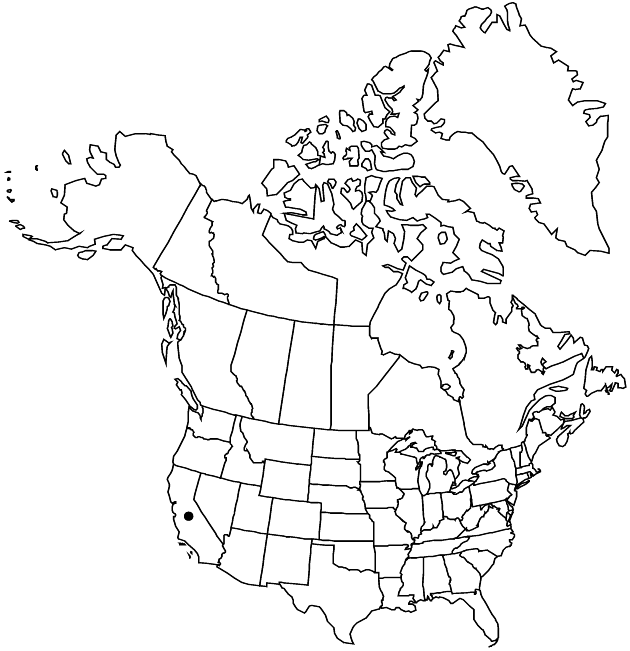Arnica venosa
Univ. Calif. Publ. Bot. 6: 174. 1915.
Plants 20–60 cm. Stems simple or branched (prominently ribbed; caudices woody). Leaves 6–10 pairs, cauline (basal leaves withered by flowering; proximal cauline scalelike, middle leaves largest, distal reduced, bractlike) usually broadly sessile, rarely broadly petiolate; blades (3-nerved or 5-nerved, strongly reticulate-veined) ovate-elliptic to broadly lanceolate, 3–7 × 1.5–4 cm (firm), margins irregularly and coarsely serrate, apices acute to obtuse, faces: abaxial pilose, stipitate-glandular (especially on veins), adaxial glabrate to stipitate-glandular. Heads 1. Involucres turbinate-campanulate. Phyllaries 8–19, ovate to broadly lanceolate. Ray-florets 0. Disc-florets 30–60; corollas yellow; anthers yellow. Cypselae dark gray, 6–8 mm, densely hirsute (hairs duplex); pappi white, bristles barbellate. 2n = 38.
Phenology: Flowering May–Jun.
Habitat: Open, often disturbed, oak-pine forests
Elevation: 400–1400 m
Discussion
Arnica venosa is known only from Shasta and Trinity counties.
Selected References
None.
